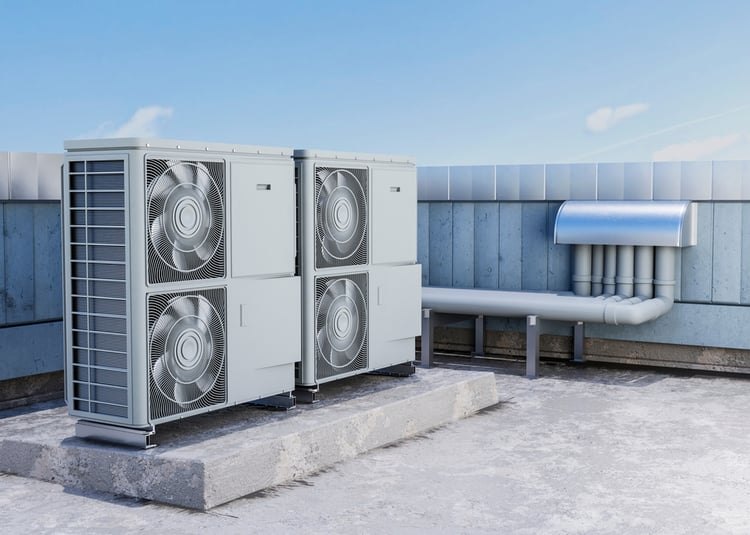LA Banning Natural Gas in New Residential and Commercial Buildings: How to Go Fully Electric

In May 2022, the Los Angeles City Council voted to ban natural gas in new residential and commercial buildings. More than 50 Californian cities have enacted similar rules, banning or limiting the consumption of natural gas. Specific details about the gas ban have not been published as of September, but LA plans to have the law in effect by January 2023.
The LA natural gas ban requires new constructions (residential and commercial) to be designed as zero-emission buildings. This means they cannot use combustion appliances for purposes like cooking, space heating and water heating. Electrification can reduce the carbon footprint of the building sector, but energy efficiency is key to avoid excessive power bills. This is especially true in states like New York and California, where kilowatt-hour prices are much higher than the US average.
Considering a fully electric building? Get an energy efficient MEP design.
Decarbonization Plans in LA: A Quick Overview

The LA natural gas ban has been led by Councilmember Nithya Raman. According to the motion presented, buildings account for 43% of greenhouse gas emissions in Los Angeles, surpassing all other sectors of the local economy. For comparison, buildings account for 30% of nationwide emissions and only 25% of California’s statewide emissions. The motion also highlights some advantages of fully electric buildings, compared with buildings using both gas and electricity:
- Better indoor air quality, since onsite combustion is eliminated.
- Lower construction costs (when properly designed).
- Fewer safety risks, especially during earthquakes.
A detailed ordinance or regulatory framework has not been published yet, but the goal is enacting the gas ban by January 1, 2023, or earlier. Eliminating natural gas completely can be very difficult in some building types, including restaurants and other occupancies that rely on commercial kitchens. The LA gas ban could have different requirements per building type, including a longer phase-out schedule for occupancies that are highly dependent on natural gas.
California has a statewide target of reaching 100% clean electricity by 2045, and Los Angeles has a more ambitious goal of 100% clean electricity by 2035. The California Energy Commission also created a $60-million fund to help electrify the affordable housing sector, and they approved a new building code that establishes electric heat pumps as the baseline requirement from 2023. California plans to install 6 million heat pumps in new constructions and existing buildings by 2030.
Avoiding Excessive Power Bills in Fully Electric Buildings: A Key Challenge

Although natural gas is a fossil fuel, its emissions per unit of energy are lower than those of coal and oil. Natural gas has been a cost-effective energy source for heating appliances throughout the US and phasing it out from the building sector requires careful planning to be viable. Professional engineering services are also key: fully electric building systems must provide the same reliability as traditional designs with mixed energy sources.
California has some of the highest electricity prices in the country. According to the latest data from the Energy Information Administration, the average electricity price for US homeowners was 15.42 cents/kWh in June 2022, but the average rate rises to 28.98 cents/kWh in the case of California.
To prevent excessive power bills, fully electric buildings must have an energy efficient design.
- Having a well-insulated and airtight building envelope is key, since this reduces heat loss during the winter months.
- Electric resistance heaters should be avoided, especially with California’s high electricity prices.
- A heat pump uses 2 to 6 times less electricity than an equivalent resistance heater (depending on its type and rated efficiency).
Heat pumps can be complemented with solar power and energy storage, to minimize the consumption of expensive electricity from the grid. Thanks to the Inflation Reduction Act, both solar panels and batteries now qualify for a 30% Investment Tax Credit. The Act also introduced tax credits and rebates for energy efficiency measures in homes, and heat pumps are eligible for both benefits.
California will soon introduce Net Energy Metering 3.0, which greatly reduces the power bill credits given to solar owners for surplus production. Instead of being exported to the grid, this electricity can be stored locally in a battery, or used by a heat pump water heater with an insulated storage tank. Both measures take advantage of surplus solar generation, reducing consumption at other times of the day when homes and businesses rely on the grid.

Michael Tobias
Michael Tobias, the Founding Principal of NY Engineers, currently leads a team of 150+ MEP/FP engineers and has led over 4,000 projects in the US
Join 15,000+ Fellow Architects and Contractors
Get expert engineering tips straight to your inbox. Subscribe to the NY Engineers Blog below.

